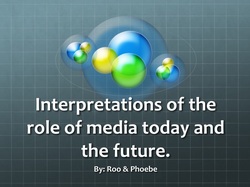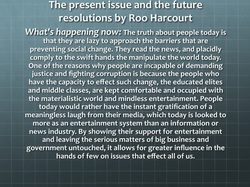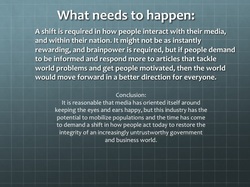Globalization, Media, and Social Change
Phoebe G. Lifton
Globalization, Media, and Social Change
Individual Assignment
Time to Change
Newspapers in India have a large impact on the opinion and belief of the majority of its citizens. Now that the papers focus is on material values and corporate publicity, it could be having an impact on the value system of its subscribers. I see this impact on women especially because their image is typically a lot more important in society then men’s. Fairness cream ads in the newspaper support this idea, and the Roop Kanwar case of Sati shows how much the newspaper content influences and affects people.
At 3 rupees a publication, the Times of India, the most widely read newspaper in the country and is accessible to almost any Indian who desires it. This means that the information in each publication has the capacity to reach a wider audience then most other forms of media in the country. For news, something defined as an account or description of an event; the importance of this content is immense due to the audience it reaches. This puts newspapers in a very powerful position within society.
In author Mala Sen’s acknowledgements for her book Death by Fire, a historical look at Sati, dowry death & female infanticide in modern India (published in 2001), she says she owes much of her research to the India Press. I found this book to be full of clippings from newspapers all over India that contributed to the stories and information presented on the issues. The book focused on the Roop Kanwar case of performing Sati in 1987. The case became a scandal due to the question if Roop Kanwar performed it willing or not and the court cases against her family. Mala Sen describes, “the practice was believed to have died out”, since it was outlawed in 1829 by the British administration in India.
I believe the way the media covered the story of Roop Kanwar, and the opinion the publications subscribed to brought the tradition back to life. The book gives an example of a publication on September 6th only two days after Kanwars death by a Rajasthani paper called Rashtradoot that read:
“By sacrificing her life, an eighteen-year-old woman, Roop Kanwar, has re-enacted the spectacle of sati, a tradition written in golden letters in the history of virtuous Rajput women devoted to their husbands. Steeped in the glorious tradition, this brave girl has moved the common people by following the Indian cultural tradition of sati even forty years after independence.” (page 5-6)
Mala Sen explained this was commonly how the news reports were circulated about the event starting in Rajasthan with an estimated circulation of 1.5 lakhs. The book then explains that no press were present at Roop Kanwars death, yet newspapers printed details like she died with a smile on her face to perpetuate this biased report. Its easy to see how Mala Sen suggests that, “these newspapers began to shape public opinion”(page 5), as she says the reports spread to Hindi dailies often the front page story all over India. After Roop Kanwars’ case of Sati being performed and the positive media reaction that was spread nationwide, reports of Sati began to rise.
I can’t completely attribute the sudden rise in Sati to the newspaper media, but the implications of it having a strong impact in formulating public opinion is clear. Whether the newspapers were seeking out more cases of Sati due to the interest and scandal, or whether more cases of Sati were actually occurring for the newspapers to report is hard to tell. It was mostly likely a mixture of the two.
As the most accessible form of mass media, newspapers influence public opinion. That being said, what do newspapers highlight and focus on in India today? In a cosmopolitan city like Bangalore I have found the newspaper industry to comply with more of a city lifestyle. Where material things and appearances have a higher value.
On April 7th 2011 on the top left of the front page of the Times of India I see an ad picturing a washed out looking woman advertising Fair and Lovely cream. These images are plastered on the pages throughout the paper and not just in the Times. But how does this ad become front page worthy? In a visit to the Times of India in Bangalore they make clear their purpose is not to necessarily report on events but to, “deliver audiences to advertisers”. So content like ads for fairness cream become more of a priority at the advertisers wish rather than reporting detailed news.
For women I find this to be threatening. Every time a woman tries to educate herself on what is happening in her country, she is bombarded with a skewed image of how a woman should look based on an advertiser’s will to make money off her insecurities. Images, whether acknowledged consciously or not, have an impact on her and she is left defenseless to the corporates that seem to control the Times of India and other newspapers.
The advertisements don’t only affect women; the male readers who see this image also perpetuate this construct of fairness as beautiful and desirable. The damage is done to both and far-reaching to the population. Newspaper print needs to be more conscious about their impact. They need to take responsibility for how their content is affecting not only their subscribers but also everyone in society. Lionel Barber editor of the Financial Times says, "The value of news is based on trust. “, and this trust must be respected.
Sources
-Times of India Bangalore visit
-Book: Death By Fire by Mala Sen
-Mr. Pradeep Kumar’s session on “Media & Society: Affiliations & Interface”
-Various newspaper publications in Bangalore
Globalization, Media, and Social Change
Individual Assignment
Time to Change
Newspapers in India have a large impact on the opinion and belief of the majority of its citizens. Now that the papers focus is on material values and corporate publicity, it could be having an impact on the value system of its subscribers. I see this impact on women especially because their image is typically a lot more important in society then men’s. Fairness cream ads in the newspaper support this idea, and the Roop Kanwar case of Sati shows how much the newspaper content influences and affects people.
At 3 rupees a publication, the Times of India, the most widely read newspaper in the country and is accessible to almost any Indian who desires it. This means that the information in each publication has the capacity to reach a wider audience then most other forms of media in the country. For news, something defined as an account or description of an event; the importance of this content is immense due to the audience it reaches. This puts newspapers in a very powerful position within society.
In author Mala Sen’s acknowledgements for her book Death by Fire, a historical look at Sati, dowry death & female infanticide in modern India (published in 2001), she says she owes much of her research to the India Press. I found this book to be full of clippings from newspapers all over India that contributed to the stories and information presented on the issues. The book focused on the Roop Kanwar case of performing Sati in 1987. The case became a scandal due to the question if Roop Kanwar performed it willing or not and the court cases against her family. Mala Sen describes, “the practice was believed to have died out”, since it was outlawed in 1829 by the British administration in India.
I believe the way the media covered the story of Roop Kanwar, and the opinion the publications subscribed to brought the tradition back to life. The book gives an example of a publication on September 6th only two days after Kanwars death by a Rajasthani paper called Rashtradoot that read:
“By sacrificing her life, an eighteen-year-old woman, Roop Kanwar, has re-enacted the spectacle of sati, a tradition written in golden letters in the history of virtuous Rajput women devoted to their husbands. Steeped in the glorious tradition, this brave girl has moved the common people by following the Indian cultural tradition of sati even forty years after independence.” (page 5-6)
Mala Sen explained this was commonly how the news reports were circulated about the event starting in Rajasthan with an estimated circulation of 1.5 lakhs. The book then explains that no press were present at Roop Kanwars death, yet newspapers printed details like she died with a smile on her face to perpetuate this biased report. Its easy to see how Mala Sen suggests that, “these newspapers began to shape public opinion”(page 5), as she says the reports spread to Hindi dailies often the front page story all over India. After Roop Kanwars’ case of Sati being performed and the positive media reaction that was spread nationwide, reports of Sati began to rise.
I can’t completely attribute the sudden rise in Sati to the newspaper media, but the implications of it having a strong impact in formulating public opinion is clear. Whether the newspapers were seeking out more cases of Sati due to the interest and scandal, or whether more cases of Sati were actually occurring for the newspapers to report is hard to tell. It was mostly likely a mixture of the two.
As the most accessible form of mass media, newspapers influence public opinion. That being said, what do newspapers highlight and focus on in India today? In a cosmopolitan city like Bangalore I have found the newspaper industry to comply with more of a city lifestyle. Where material things and appearances have a higher value.
On April 7th 2011 on the top left of the front page of the Times of India I see an ad picturing a washed out looking woman advertising Fair and Lovely cream. These images are plastered on the pages throughout the paper and not just in the Times. But how does this ad become front page worthy? In a visit to the Times of India in Bangalore they make clear their purpose is not to necessarily report on events but to, “deliver audiences to advertisers”. So content like ads for fairness cream become more of a priority at the advertisers wish rather than reporting detailed news.
For women I find this to be threatening. Every time a woman tries to educate herself on what is happening in her country, she is bombarded with a skewed image of how a woman should look based on an advertiser’s will to make money off her insecurities. Images, whether acknowledged consciously or not, have an impact on her and she is left defenseless to the corporates that seem to control the Times of India and other newspapers.
The advertisements don’t only affect women; the male readers who see this image also perpetuate this construct of fairness as beautiful and desirable. The damage is done to both and far-reaching to the population. Newspaper print needs to be more conscious about their impact. They need to take responsibility for how their content is affecting not only their subscribers but also everyone in society. Lionel Barber editor of the Financial Times says, "The value of news is based on trust. “, and this trust must be respected.
Sources
-Times of India Bangalore visit
-Book: Death By Fire by Mala Sen
-Mr. Pradeep Kumar’s session on “Media & Society: Affiliations & Interface”
-Various newspaper publications in Bangalore






